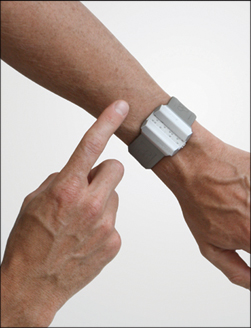


 David Chavez's Haptica Braille Watch Concept will be a featured designer at Smithsonian's Cooper-Hewitt, National Design Museum's exhibition, "National Design Triennial: Why Design Now?," from May 14, 2010 - January 9, 2011. Haptica enables the user to get a quick and accurate time reading while maintaining user discretion.
David Chavez's Haptica Braille Watch Concept will be a featured designer at Smithsonian's Cooper-Hewitt, National Design Museum's exhibition, "National Design Triennial: Why Design Now?," from May 14, 2010 - January 9, 2011. Haptica enables the user to get a quick and accurate time reading while maintaining user discretion. 
